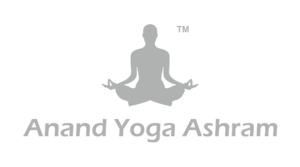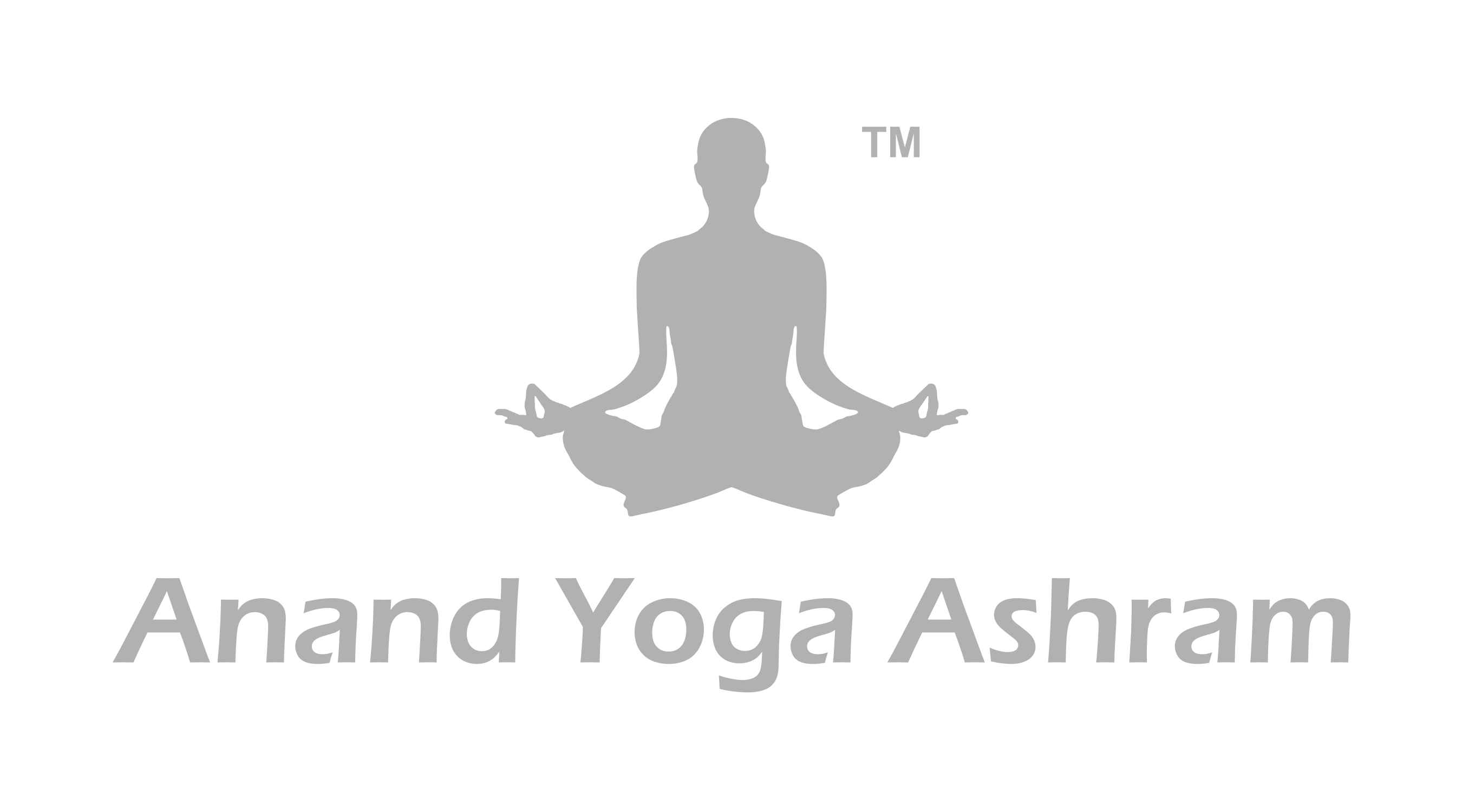RELAXATION – विश्राम – आरामः
Relaxation techniques: – Relaxation is a beautiful process that helps us to recover from the wear and tear that happens in our day-to-day actions. Daily routines, work, travels, Managing home and more. Juggling from one action to the other without the concept of relaxation in our daily routine we reach to a physical and mental breakdown; vicious circle of such nature is not good for our health. Yoga conscious relaxation techniques are specifically designed to support our health. Depending on our daily tasks we should accordingly use such techniques to maintain physical and mental health. Many of us have misconception towards relaxation. Like, sleeping 8 hours will help us to recover from everything, whereas thinking that already stresses us with another task of sleeping 8 hours. Yoga offers us different approach which is a good conscious relaxation at regular intervals when needed helps us more than relaxing after complete burnout. Recommendations Method of practice To do this conscious relaxation process you need your yoga mat placed vertically in contact to the wall which we will use for a particular asana in between of the complete process. This process is for 45 minutes and includes 6 different postures.
Success – Failure
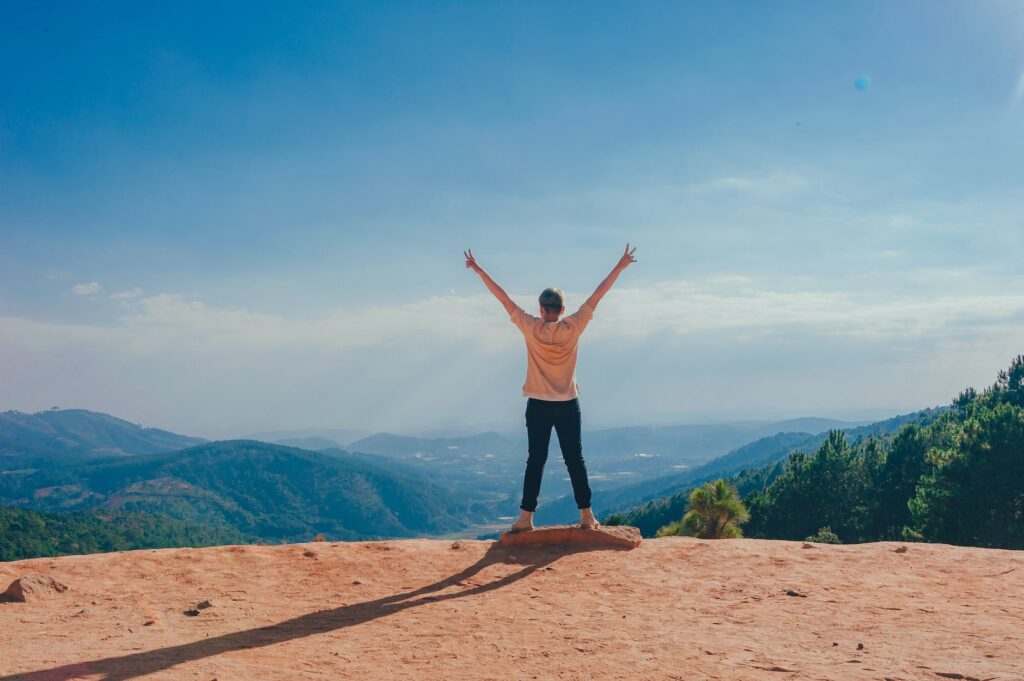
Causes of Success according to Hatha Yoga Causes of Success (Sadhaka Tattwa) on the Path of Yoga According to Yogi Swatmarama “The real purpose of Hatha Yoga is to open the gate to Self-realisation”. In this sense we can define the goal of Hatha Yoga as ‘Self-realisation’ and success as the ability to unlock the gate which leads us there. In order to unlock something, though we need ‘keys’ and verse 16 of the Hatha Yoga Pradipika provides us with these. उत्साहात्साहसाद्धैर्यात्तत्त्व-जञानाश्छ निश्छयात |जन-सङ्ग-परित्यागात्ष्हड्भिर्योगः परसिद्ध्यति || १६ || utsāhātsāhasāddhairyāttattva-jñānāścha niśchayāt |jana-sanggha-parityāghātṣhaḍbhiryoghaḥ prasiddhyati || 16 || The following six bring speedy success; courage, daring, perseverance, discriminative knowledge, faith, aloofness. from company Causes of Failure according to Hatha Yoga Causes of Failure (Badhaka Tattwa) on the Path of Yoga Failure in Sadhana अत्याहारः परयासश्छ परजल्पो नियमाग्रहः |जन-सङ्गश्छ लौल्यं छ षहड्भिर्योगो विनश्यति || १५ || atyāhāraḥ prayāsaścha prajalpo niyamāghrahaḥ |jana-sangghaścha laulyaṃ cha ṣhaḍbhiryogho vinaśyati || 15 || Yoga is destroyed by the following six causes: over-eating, exertion, talkativeness, adhering to rules, company of men, and unsteadiness.
Pratyahara – Concept of Pratyahara

Pratyahara Meaning The term “pratyahara” composes two Sanskrit words, prati and ahara. “Ahara” means “food,” or “anything we take into ourselves from the outside.” “Prati” is a preposition meaning “against” or “away.” “Pratyahara” means literally “control of ahara,” or “gaining mastery over external influences.” Pratyahara is also considered as bridge between the last 3 and first four limbs of Asthanga Yoga. Turtle is a symbol for explaining the concept, turtle withdrawing into its shell—the turtle’s shell is the mind and the turtle’s limbs are the senses. The term is usually translated as “withdrawal from the senses,”. When the mind is withdrawn from objects of senses and the organs of senses also withdraw themselves from their respective objects and thus are said to imitate the mind. This is known Pratyahara. The real form of any object is in the Chitta (Personality complex). The organs identify themselves with the objects and takes the forms of whatever objects comes to them. If you can restrain the mind stuff from taking these forms the mind will remain calm. This is called Pratyahara. YONI MUDRA (Technique to Practice Pratyahara) YONIMUDRA – THE WOMB POSTURE ‘I ask this eternal question, who am I? From where have I come? Where am I going? But whom shall I ask and how do I know?’ ‘Not being carried away by the world, I realize introspection is the key! Let the sounds of Universe resound within my entire being’! The word ‘Yoni’ means ‘womb’. In Yoga and Indian Philosophical thought ‘Yoni’ is the ‘Divine womb’ (Brahmayoni) or the Golden Cosmic Womb (Hiranyagarbha) from which all has emerged. It is through Yoni Mudra that we are able to withdraw from the outward flow of our senses and experience the universe within. Itis imitated from a tortoise who withdraws all its limbs inside its shell the moment it perceives danger. This Yoga Mudra provides the best psycho-physical method for inducing and developing abstraction under unfavorable or disturbing surroundings. A Mudra is a technique by which ‘Prana’ is made to flow in a desired direction. The prime purpose of practicing a Mudra is to gain control and mastery over mind. There are many mudras mentioned in Hatha Yoga Pradipika like Mahamudra, Khecharimudra and Viparitkarni Mudra. Steps Note: In case your hands get weary when staying for a longer duration you may if need be lower your elbows keeping the hands and fingers in their respective positions. Limitations / Contraindications Low blood pressure, mental illness Benefits
Dynamic – Mudra – 100 Breath Meditation
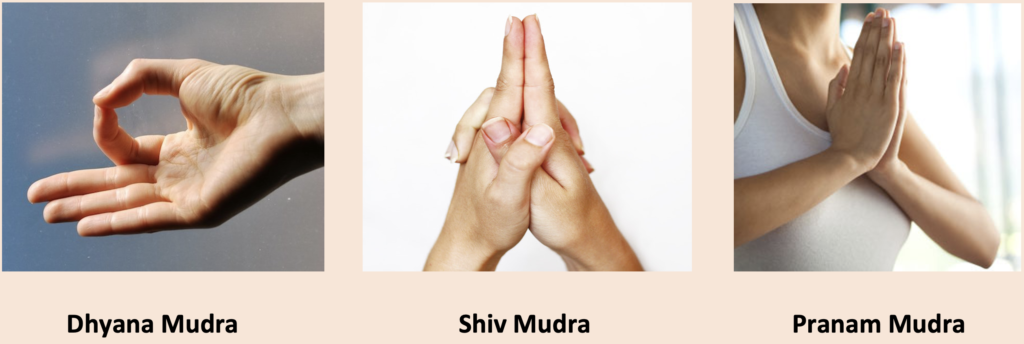
Method of practice – Technique 2 100 Breath Meditation (8-10 minutes) This meditation and mudra (hand gesture) combination is beneficial for both physical and mental health. Benefits include focusing the mind, improving energy flow, promoting good sleep, reducing stress and restoring a sense of balance. It also helps us to feel more present, allowing us to enjoy our day to the full, with composure and without distraction. Sequence
DYNAMIC MEDITATION – TECHNIQUES
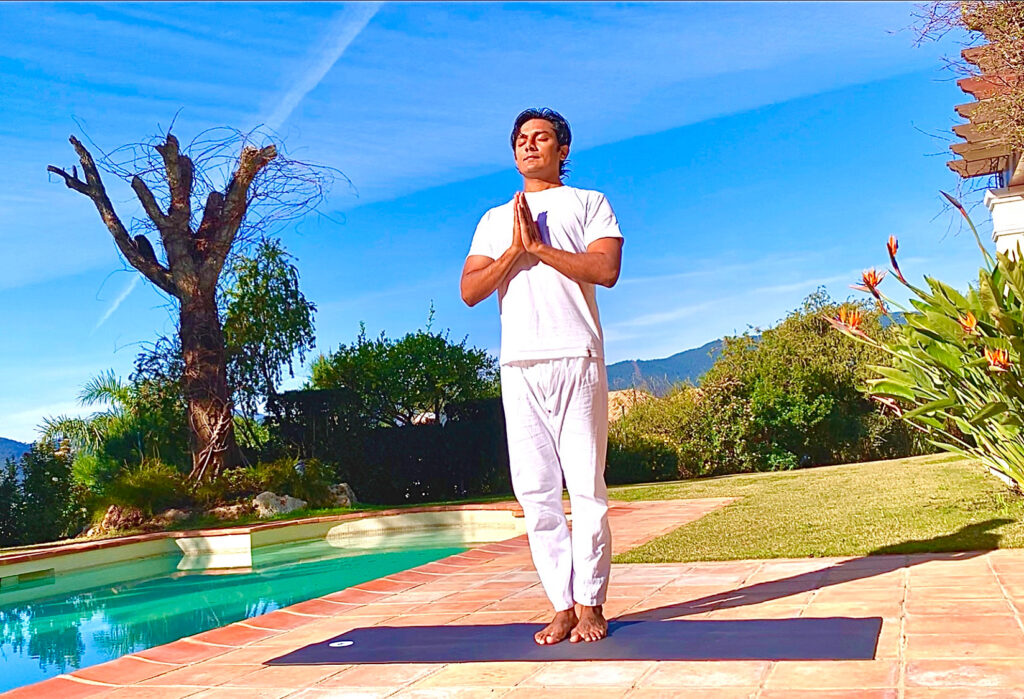
Dynamic Meditation (This type of practice can be considered as Dharna) Dynamic meditation techniques are for beginners (restless in nature) and the purpose is to start with meditation practice and establish an awareness towards the nature of further practice which needs more stability, time and commitment. In this type of meditation, we try to use all the different types of meditative poses to understand them and to become aware how our body is able to adopt them during the practice. Like, Sthithprarthanaasana (Prayer Pose), Sukhasana, Padmasana, Vajrasana, Siddhasana and more. Sidddhasana is considered the King of meditative postures and supports the highest level of practices. The name Siddha means the one who has achieved the powers (Siddhi). Method of practice – Technique 1 In this practice we switch from one meditative pose to the other, we can start this practice by maintaining each pose for 5 minutes as beginners and slowly progress towards increasing time on each pose as we practice consistently for a month. Note: If you cannot maintain each pose for 5 minutes and find this process difficult then you may start the same process with 1 minute each pose and as you feel comfortable after few consistent practices increase to 2 minutes each pose, 3 minutes each pose and so on. If possible, we should maintain the eyes closed throughout the practice Benefits
Meditation – Instant Meditation Techniques
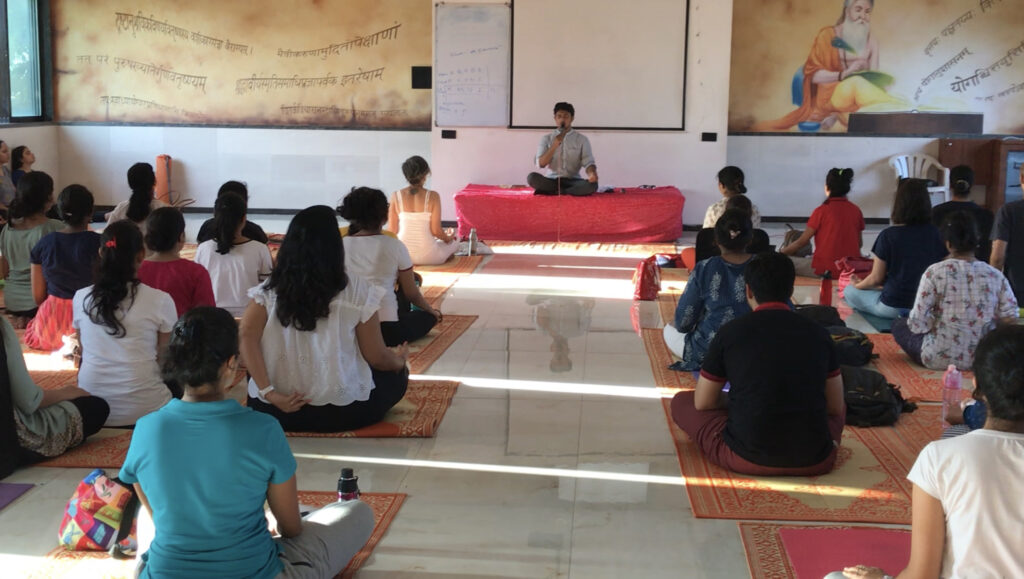
Meditation Techniques for practice In today’s times meditation is a very commonly used concept with offerings of more than hundreds of techniques. In yoga practices we practice meditation in a progressive method using relevant techniques that helps us to achieve the needful results and not to be overwhelmed or not to be stressed about meditation itself as meditation supposed to help us achieve undisturbed tranquility, peace, calm and Anand state of being (Blissful state of being). We are learning to use several Meditation techniques in the following mentioned methods in this book that will help us at all levels of our practice. Instant Meditation techniques (This type of practice can be considered as Dharna) Instant meditation technique is beneficial and very helpful if we are not feeling right in the moment or with any situation we are caught up in, feeling indecisive, low on energy or too excited and would like to feel better, strong and confident. This technique can be used by everyone, anytime and anyplace. There are three different techniques as mentioned below. Method of practice – Technique 1 Method of practice – Technique 2 Method of practice – Technique 3 Method of practice – Technique 4 – If you believe in God Surveys indicate that nearly 90% of patients with serious illness will engage in prayer for the reduction of their suffering or disease. Among all forms of complementary medicine, prayer is the single most widely- practiced healing modality. The following explanations have been offered as to how prayer helps improve health
Guided Meditation
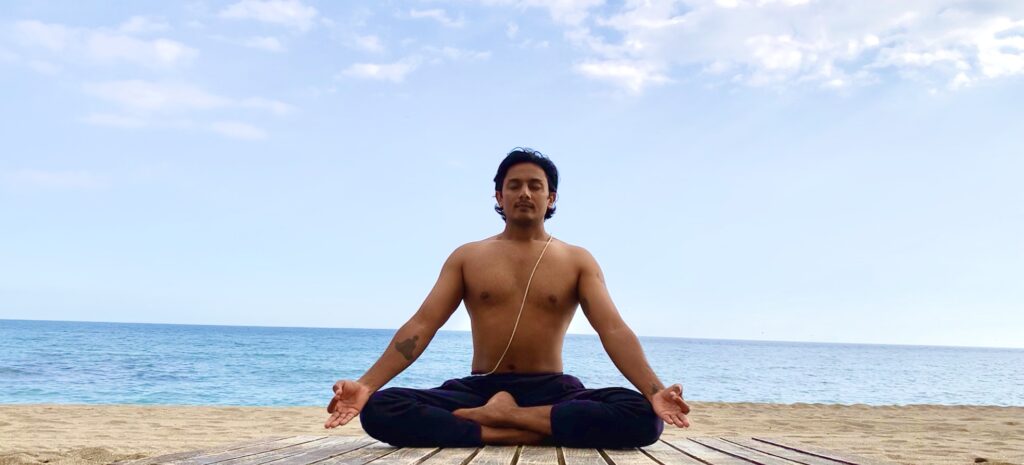
This type of meditation, as the name suggests that it is a Guided process by Yoga expert. We follow such techniques to create a show reel that otherwise is out of our imagination as we are so caught up with our daily routine life that we forget there is more to life. This guided process can help us with positive support towards our mind and body balance, to be an integrated personality and spiritual upliftment. Yoga experts can guide us to balance our emotions and to have more clarity in our life which support the higher level of awareness. This meditation if practiced regularly helps us further to have higher level of Inference which supports our further yoga practices towards Samadhi. We should continue to practice until we learn to practice such guided meditation with our own guidance towards the higher Yogic practices. Preparation for such practice Method of Practice
Mudra – Yogic Hand Gestures – Hasta Mudra
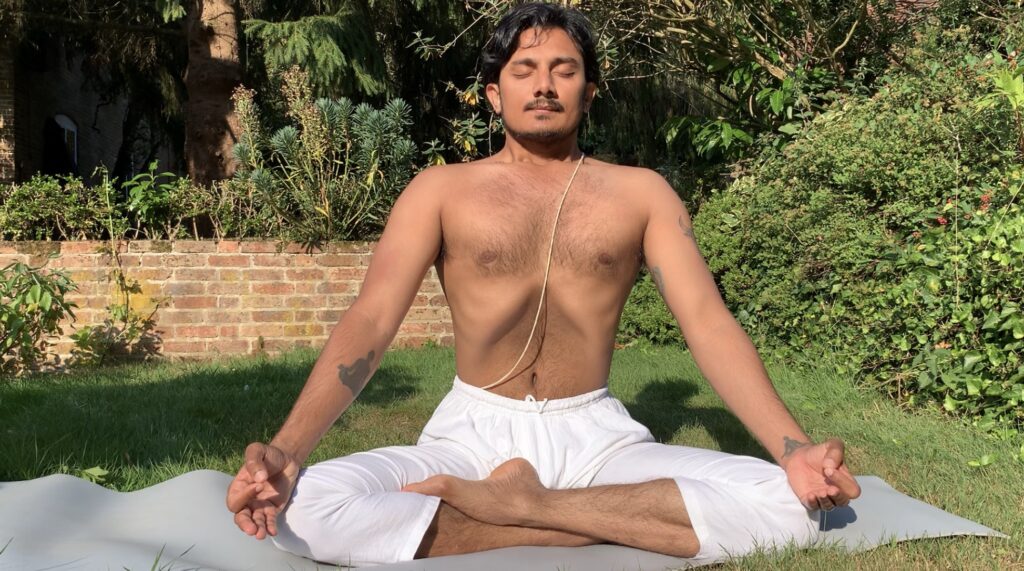
Yogic Hand Gestures (Mudras) Mudras are hand gestures also known as Hasta Mudra. In India Hrishi and Munis (Saint and Sages) have done great contribution in sharing amazing ancient philosophies Yoga, Samkhya, Veda & Upanishads and more, that helps humanity till date and supports the human wholistic health. Humans can stay healthy physically and mentally by practicing various yogic techniques and progress spiritually. Asanas, pranayama, Mudra, Bandha, Meditation and reading yogic scriptures. Mudra practices are a scientific way to attain and maintain physical health and mental peace throughout one’s life time. There are many mudras and can be used according to one’s needs. We use mudras while praying to God and Goddesses, rituals, Mantra and Tantra practices, Music, Dance and Yoga practices. Mudras can be used as preventive as well as to get rid of various diseases or ailments and attain physical and mental strength. A common man can live a healthy lifestyle keeping away the diseases by using mudras properly. Note: Dhyana Mudra Method: Sit in any meditative pose Sukhasana, Padmasana, Siddhasana, Swastikasana or Vairasana Keep each palm on the respective knee. Thumb is touched at the tip of the first finger, slightly pressed. Other three fingers are kept together and straight. Benefits:
Pranayama – Anulom Vilom – Alternate Nostril Breathing
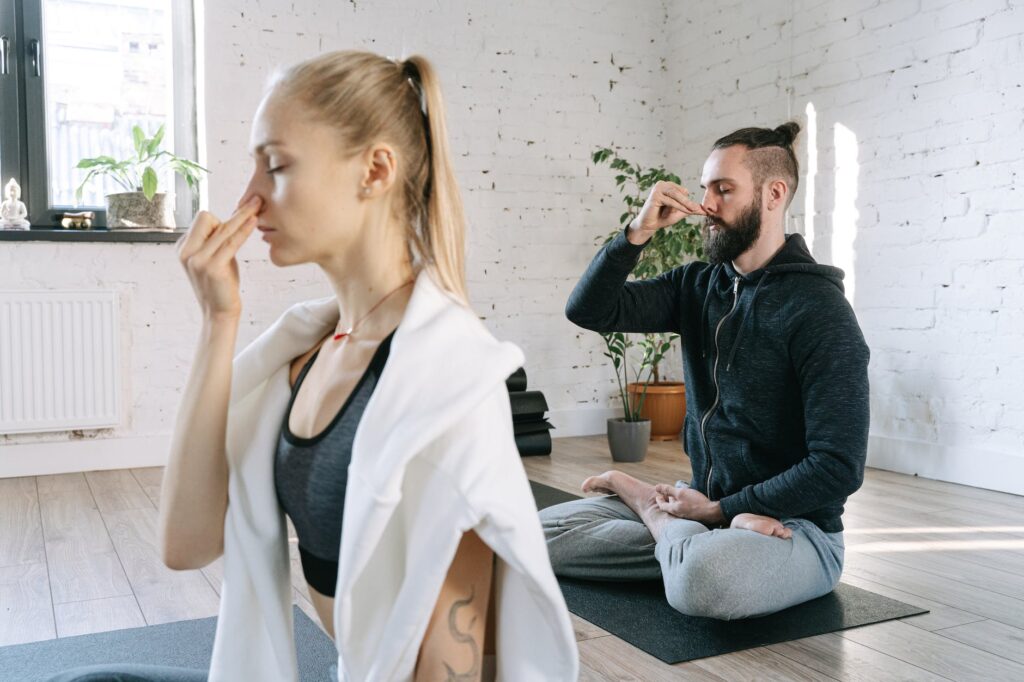
Anulom-Vilom – Alternate nostril breathing Anulom – Vilom Pranayama or Alternate Nostril Breathing Exercise or Nadi – Shodhana Pranayama. This is not just a breathing exercise, but it is a noteworthy yogic technique that involves controlling of subtle ‘Pranic energies’ (or vital force or bio-energies) of our body flowing through specific channels. The ‘ida’ and ‘pingala’ nadis or channels (nadis or channels cannot be anatomically indicated.) The controlling of the Prana through regular practice of Anulom Vilom pranayama helps to balance the energies flowing through the Ida and Pingala nadis. This, in turn, stimulates the central channel called Sushumna Nadi. This helps in elimination of free radicals and toxins from the Ida and Pingala nadi and helps to restore a balance between the two hemispheres of the brain. This helps to purify the entire nervous system. Healing and bringing about mental calm, peace, and tranquillity. This ancient practice helps in the strengthening of the mind and complete relaxation. Helpful in preparing the whole body for meditation. Engaging in this yoga exercise is simple and easy as a result more and more people are opting for it. Can be easily done anytime and anywhere even from the comfort of your own home or office chair. Note: It can be done in the morning or in the evening. Ensure that you practice anulom vilom pranayama 2-3 hours after having your food. Cardiac or Blood pressure patients should not hold their breath while doing this pranayama just keep inhaling and exhaling. Click here for practice instructions and benefits
